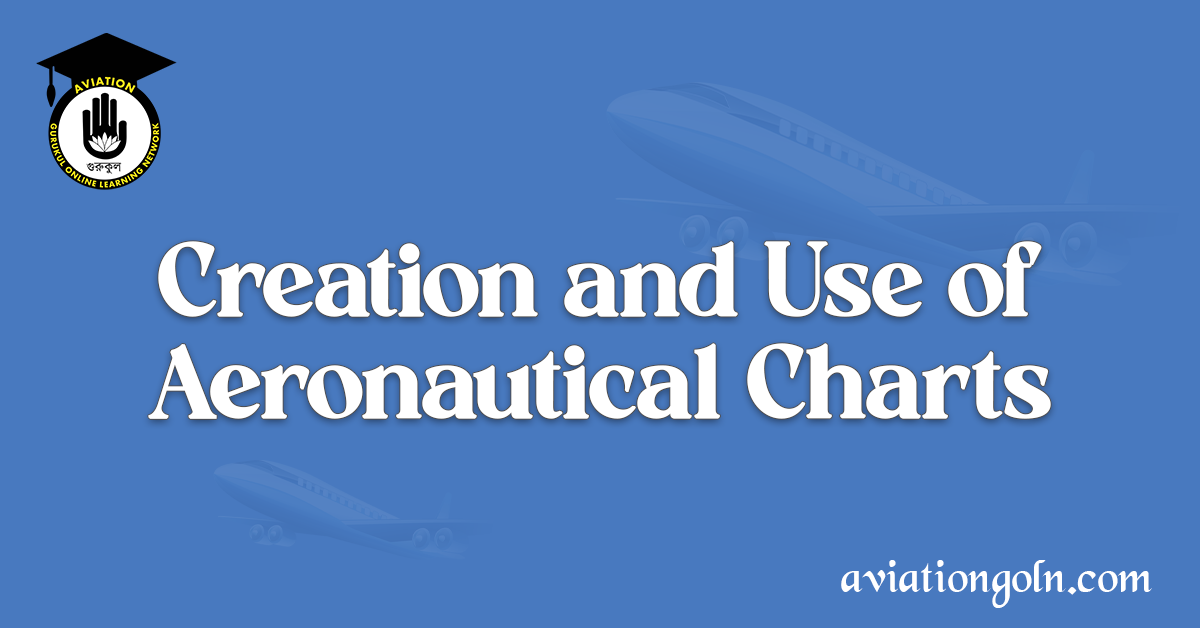Creation and Use of Aeronautical Charts: Aeronautical charts are essential tools for pilots and aviation professionals, offering a visual representation of topographical features and providing a myriad of relevant flight details. These charts, in conjunction with Aeronautical Information Circulars, form the backbone of safe and efficient navigation in the skies. Understanding their creation and proper utilization is fundamental for anyone involved in flight operations. In this deep dive, we’ll explore the meticulous process of creating these charts, their various types, and how pilots effectively use them.
Creation and Use of Aeronautical Charts: Aeronautical Information Circulars and Charts
1. What are Aeronautical Charts?
At their core, aeronautical charts are detailed maps tailored specifically for aviation. They provide essential data such as terrain heights, airway routes, airport details, airspace boundaries, and navigational aids. This information helps pilots plan their flight, navigate in flight, and ensures they stay clear of obstacles and restricted areas.

2. Creation of Aeronautical Charts
2.1 Data Collection
The process starts with collecting raw data. This includes topographical data from land surveys, satellite imagery, and airborne geophysical surveys. Information regarding man-made obstacles like radio towers, buildings, and power lines are also collected.
2.2 Compilation and Validation
The raw data undergoes rigorous validation. Subject matter experts evaluate and confirm the accuracy of the information. The relevant aviation authorities often cross-check this data with existing databases.
2.3 Design and Standardization
Aeronautical charts follow specific international standards set by organizations like the International Civil Aviation Organization (ICAO). Standardization ensures that a pilot familiar with reading a chart from one country can also interpret charts from another country.
2.4 Regular Updates
The aviation environment is dynamic. New obstacles arise, air routes change, and airports undergo renovations. To remain relevant and useful, aeronautical charts need frequent updates. This ensures that pilots always have the latest information at their fingertips.

3. Aeronautical Information Circulars (AIC)
Separate from aeronautical charts but equally crucial are Aeronautical Information Circulars. AICs contain information that doesn’t necessarily fit on a chart but is vital for air navigation. They provide details about:
- Changes in aviation laws and regulations.
- New or revised procedures.
- Information about upcoming aviation events or exercises that might affect flight operations.

4. Types of Aeronautical Charts
4.1 Visual Flight Rules (VFR) Charts
Designed for pilots flying under VFR, these charts emphasize details needed for visual navigation. They show topography, visual checkpoints, airspaces up to 14,500 feet, and more.
4.2 Instrument Flight Rules (IFR) Charts
Pilots flying under IFR rely on these charts for information about airways, minimum altitudes, navigational aids, and other details pertinent to instrument navigation.

4.3 Terminal Procedure Charts
These charts provide detailed information for arrivals and departures in complex airspace, especially near major airports.
4.4 Special Use Charts
These are created for specific purposes like helicopter navigation, high-altitude flight, or military operations.

5. Using Aeronautical Charts
5.1 Pre-flight Planning
Before taking to the skies, pilots meticulously plan their route using these charts. They study the terrain, calculate distances, note potential hazards, and mark out emergency landing spots.
5.2 In-flight Navigation
While in the air, pilots use the charts for cross-referencing their location, ensuring they are on the correct course. With the advent of technology, many aircraft now have digital chart systems, making it easier for pilots to navigate.
5.3 Emergency Scenarios
In cases of emergencies, aeronautical charts prove invaluable. They can guide pilots to the nearest airport or safe landing zone.

Aeronautical charts, in collaboration with Aeronautical Information Circulars, are indispensable tools in aviation. Their creation involves a meticulous process of data gathering, validation, and design. Different types of charts cater to various flight operations, and understanding how to use them is fundamental for safe and efficient flight. As aviation continues to evolve with advancements in technology, the essence of these charts remains consistent: ensuring pilots have the best and most accurate information available. Whether it’s the traditional paper charts or their digital counterparts, their importance in guiding pilots safely through the vast skies cannot be overstated.
